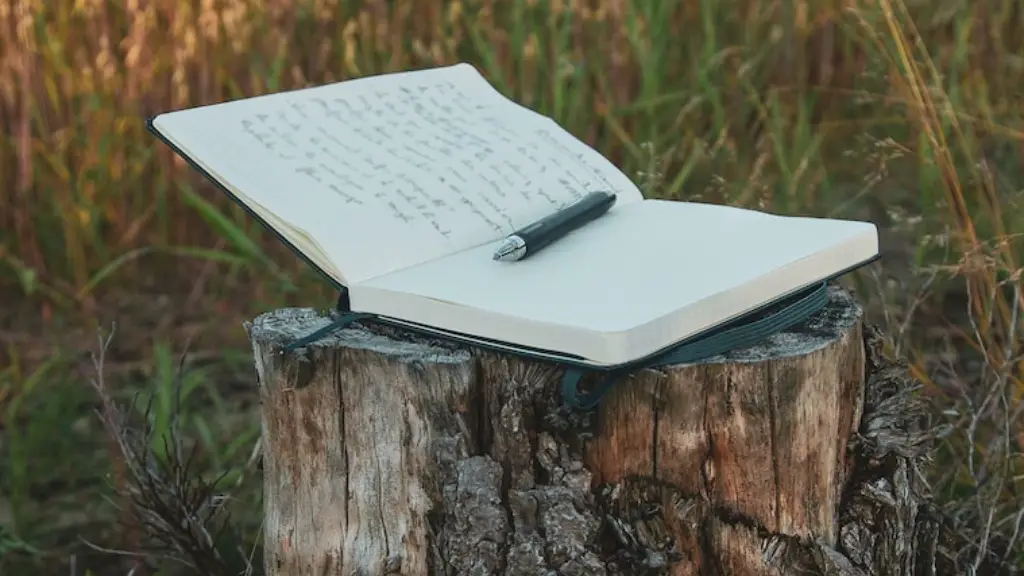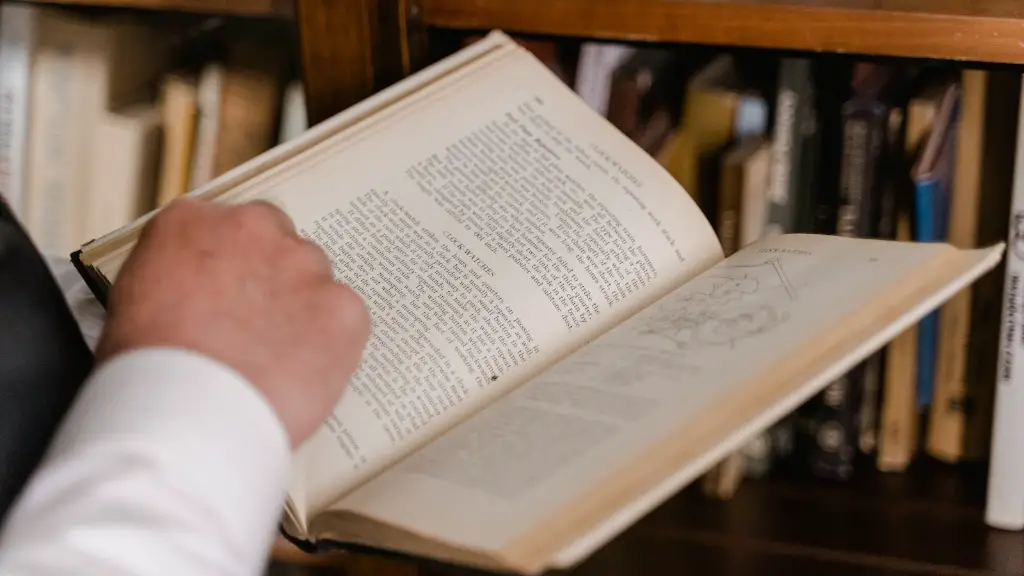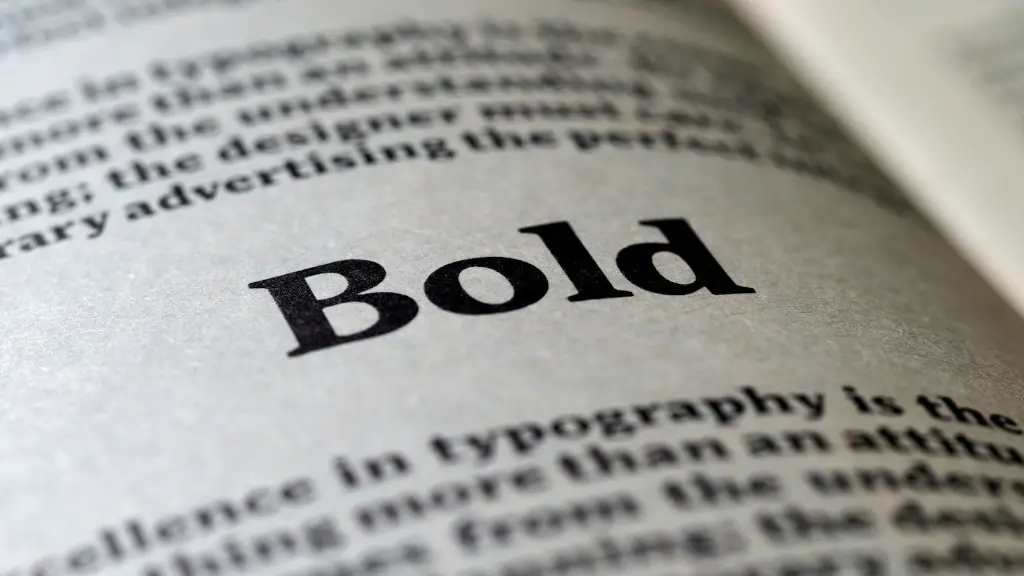Rhyme and Meter
Poetry is an incredibly powerful and beautiful art form, composed through the use of language. It has the power to evoke a range of emotions, memories, and stories in the heart and mind of the reader, creating a connection which can last generations. Though the written form of poetry has been around since ancient times, it is still celebrated as a powerful means of expression today.
At its core, poetry is distinguished from other forms of literature through its unique use of both rhyme and meter. Rhyme is a literary device in which two or more words have the same ending sound. Meter is the organized arrangement of words and syllables into particular patterns in order to create a feeling of rhythm. These two elements are essential ingredients in achieving a unified, musical, and powerful poetry experience.
For example, a song written in iambic pentameter is considered a traditionally poetic form. This form uses a 10-syllable line pattern with the stress falling on the second syllable, creating a heart-like beat in the poem. This creates a strong sense of rhythm in the poem, drawing out thought and emotion which the author wishes to evoke.
Imagery and Personification
In addition to using rhyme and meter to give poetry its unique structure and form, imagery and personification are essential tools utilized by poets in order to create vivid, emotive language. Imagery involves giving the reader a concrete visual or sensory experience when experiencing the poem, allowing them to experience and connect with the poem on a personal level. Personification, on the other hand, creates an almost mythical context and experience by giving humanlike qualities to inanimate objects, animals, and ideas.
For instance, an oft-referenced poem by William Wordsworth, “The World is Too Much With Us”, uses personification to give a sense of life to the idea of nature and the world. In this poem, Wordsworth personifies nature and the world as a woman, and speaks of how our society has lost its connection to her saying “We have given our hearts away, a sordid boon!”
This line, filled with imagery and personification, demonstrates Wordsworth’s point powerfully and poetically. Through these tools, he is able to speak volumes without speaking a single word.
Form and Structure
Form and structure also play a crucial role in what makes poetry unique from other forms of literature. Though there are no strict rules when it comes to craft and poetry forms, certain conventions have been established over time to help order and define certain styles of poetic expression. The most common form used today is the sonnet, which consists of 14 lines, divided into an octave and a sestet with a regularly used rhyme scheme. Other forms, such as the villanelle, the ode, and the pantoum also contribute to the aesthetic and power of the poem.
Form and structure are important elements which allow the poet to control and manipulate the tone, tempo, and image of their piece. The structure of the poem can give it a sense of balance and organization, or tension and excitement, depending on the form used. The use of these tools allows the poet to shape the poem, providing shape and meaning to their words.
Metaphor and Simile
Metaphor and simile are also essential elements to the creation of poetry. Both of these literary devices involve the comparison of two unrelated items in order to create an image in the mind of the reader. A metaphor is a comparison between two things which implies that one thing is another. For example, “The world is a stage” is a metaphor. A simile on the other hand, is a comparison between two items which specifically use the words “like” or “as”. For example, “The sun was like a ball of fire in the sky” is an example of a simile.
Poets often use these tools to to make a point, or illustrate a certain feeling or emotion. By using similes or metaphors, the poet can emphasize unique qualities in the item or idea they are comparing it to, allowing them to create vivid pictures in the readers mind.
Banter and Quips
While the most famous and well-loved poems often paint a picture of intricacy and sophistication, collected together in volumes of poetic work, there is still a place in the world of poetry for banter and quips as well. These types of poems are often more casual, lighthearted, and humorous, providing an air of levity to their work.
Though these poems lack the deeper meaning, emotion, and imagery characteristic of more traditional poems, they are still incredibly powerful in their own right. They offer an insight into the lives and lives of others, and can often provide a cathartic release of emotions. They are often more personal, as they tell stories and moments which can only be truly appreciated by those personally involved.
Humor in Poetry
Humor has always been a prominent element in various styles of poetry, from comedic performance pieces to ironic satire. Humor has the power to evoke emotions from the reader, opening them up to a positive and different experience. In addition, comedic poetry often has a hidden moral message and meaning, using humor to make a point in a way which is easily understood by readers.
Modern comedic poets such as Taylor Mali, Sarah Kay, and Sekou Andrews use their performances to uplift listeners, bring attention to important issues, and inspire those who watch. They use their humor as a way to bridge the gap between different beliefs and opinions, reaching the audience in a unique and different way.
The Effects of Poetry
From the most serious of topic to the most lighthearted of subjects, poetry is a powerful art form. It has the power to uplift, provide comfort, instill hope, and bring about understanding amongst all people. When read, a poem has the power to evoke powerful emotions and memories, allowing us all to connect in a deeper and more meaningful way.
The effects of poetry can be seen in the work of the great poets, from William Wordsworth and William Butler Yeats to Maya Angelou and Langston Hughes. Their work allows us to transcend time and barriers and they are a testament to the power of the poetic medium.
Spoken Word Poetry
Modern poetry has also seen a growth in the audience, impact, and platforms in which it is performed. With the rise of platforms such as YouTube and spoken word competitions, poets are finding themselves with more and more opportunities to share their work with a wider audience. These platforms allow poets to share their stories and experiences in a more extensive and more accessible way.
Spoken word poetry offers yet another way to experience poetry, allowing poets to tell their stories through both words and physical performance. It evokes emotion and understanding, allowing listeners to gain a new perspective on the world and the things which make it so special.
The Power of Poetry
The power of poetry lies in its ability to be understood by different people in different contexts, forming a unique connection between the reader and poet. Whether it be a powerful metaphor, an exciting rhyme scheme, or a witty quip, poetry has the power to evoke emotion, understanding and bring about change.
Though the tools used in poetry can often seem foreign, the beauty of the art form lies in its ability to reach out to people of all backgrounds and ages. Through its gradual evolution over the years, poetry has formed a much deeper and more far-reaching connection with the world and those who inhabit it.


